Welcome! Explore this page to learn more about:
- The Graphic Medicine Collection at Countway
- NLM traveling exhibition
- Concurrent six-week event series
- Display curated by the Center for the History of Medicine
- Other graphic artists to check out
Graphic Medicine Collection
 Graphic medicine is a field of study, community of practice, and genre of comics that is commonly defined as the intersection of the medium of comics and the discourse of healthcare. In 2018, Countway Library began supporting this then emerging, now burgeoning, field through the development of a dedicated graphic medicine collection and programming such as author talks, book clubs, and creative workshops geared towards sharing the power of comics with the Longwood community. In the time since, the library's collection has grown to become one of the largest circulating collections related to graphic medicine in the world and we've supported countless students, faculty, and staff in their exploration of how comics, and the creative visual arts more generally, can support the mission of Harvard Medical School.
Graphic medicine is a field of study, community of practice, and genre of comics that is commonly defined as the intersection of the medium of comics and the discourse of healthcare. In 2018, Countway Library began supporting this then emerging, now burgeoning, field through the development of a dedicated graphic medicine collection and programming such as author talks, book clubs, and creative workshops geared towards sharing the power of comics with the Longwood community. In the time since, the library's collection has grown to become one of the largest circulating collections related to graphic medicine in the world and we've supported countless students, faculty, and staff in their exploration of how comics, and the creative visual arts more generally, can support the mission of Harvard Medical School.
We were thrilled to be a host institution for the National Library of Medicine's traveling exhibition dedicated to the field, titled Graphic Medicine: Ill-Conceived and Well-Drawn, in early 2024. The exhibition was on display on the first floor near the Huntington Avenue entrance and accessible to the public during open building hours. This exhibition, made up of a series of banners and a dedicated website with digital exhibitions and suggested teaching tools, was also supplemented by programming throughout its time at Countway. Attendees joined us each week from January 9th until February 17th for new opportunities to explore the role of comics in health. And remember: our Graphic Medicine Collection is available to you at any time!
Traveling Exhibition
Graphic Medicine: Ill-Conceived and Well-Drawn!
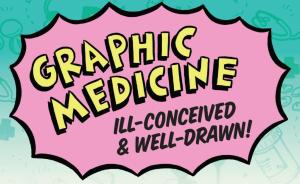
January 9 - February 17, 2024 | Countway 1st Floor Atrium
The History of Medicine Division of the National Library of Medicine is pleased to present our traveling banner exhibition Graphic Medicine: Ill-Conceived & Well-Drawn! Curated by cartoon artist Ellen Forney, the exhibition explores an increasingly popular, yet little-known literary field that uses comics to tell personal stories of illness and health. The language of words and pictures gives approachability and emotional impact to these personal stories, and even to the clinical data they sometimes include. “Graphic medicine is so effective for understanding clinical and emotional aspects of illness,” says Curator Ellen Forney.
_0.png)
The six-banner traveling exhibition Graphic Medicine: Ill-Conceived & Well-Drawn!, draws from seminal texts, newly procured by the US National Library of Medicine. The exhibition uses imagery and text from several of these personal stories told by the author as patient or caregiver. The NLM collects graphic medicine as an important facet of medical literature.
Graphic Medicine Event Series
In conjunction with the NLM exhibit, we were thrilled to present a series of events designed to highlight the breadth and depth of graphic medicine. We look forward to many similar events in the future!
 Defining Graphic Medicine: Opening Panel for the NLM Traveling Exhibit, Graphic Medicine Ill-Conceived and Well-Drawn!
Defining Graphic Medicine: Opening Panel for the NLM Traveling Exhibit, Graphic Medicine Ill-Conceived and Well-Drawn!
Wednesday, January 10 | 5-6:15pm | Hybrid Event (Zoom or Countway Library Lahey Room)_0.png)
Over the next six weeks, Countway Library will play host to the National Library of Medicine's traveling exhibit on comics in medicine, titled Graphic Medicine Ill-Conceived and Well-Drawn!. Join us for an opening panel discussion that will help frame and explore the emergence of the field, the community, and the genre that we call graphic medicine. Our panelists, Cathy Leamy, A. David Lewis, and Joel Christian Gill, bring a wealth of experience not only in comics creation, but in the study and teaching of comics across a range of disciplines. The panel will include a moderated discussion led by Countway librarian Matthew Noe and audience Q&A.
View the recording and transcript of the Defining Graphic Medicine event.
Thank you to everyone who attended virtually or in person!
 Visualizing Scholarly Communication
Visualizing Scholarly Communication
Wednesday, January 17 | 12-1pm | Hybrid Event (Zoom or Countway Rooms 102 & 103)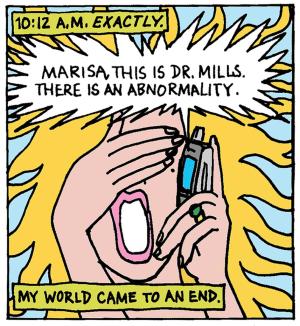
Join Countway librarians Iris Jahng and Scott Lapinski for an introductory overview on the role visuals can and are playing in scholarly communication, including visual abstracts and sketchnotes.
No experience or prior knowledge required (though attendees with prior experience will be welcome to share their own work in the area during Q&A).
View the recording and transcript of the Visualizing Scholarly Communication event.
Thank you to everyone who attended virtually or in person!
 Medicine in American Popular Graphics from Political Cartoons of the 1860s to Children’s Comic Books in the 1940s
Medicine in American Popular Graphics from Political Cartoons of the 1860s to Children’s Comic Books in the 1940s
Thursday, January 25 | 2-3:15pm | Virtual (Zoom)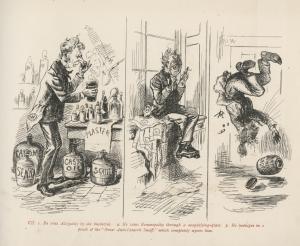
In this illustrated talk, Professor Bert Hansen sketches out a century-long sequence of American comic and cartoon art that sets the stage for the “graphic medicine” movement flourishing today. Starting with Civil-War era political cartoons by the famous Thomas Nast, the talk explores humorous caricatures in Puck and Judge from the Gilded Age, and then glances at photojournalism and the story-telling style of LIFE magazine. The narrative ends with the explosive growth of the familiar action/adventure comics in the 1940s, many of which featured heroes like Walter Reed, Louis Pasteur, Edward Jenner, and Joseph Goldberger. This history illustrates how medicine and public health stories were being imagined by innovative graphic artists over a hundred years of changing media. Please note that this event was not recorded.
Learn more at Medicine in American Popular Graphics.
 Zine Your Thesis!
Zine Your Thesis!
Tuesday, January 30 | 12-2pm | Countway Room L1-028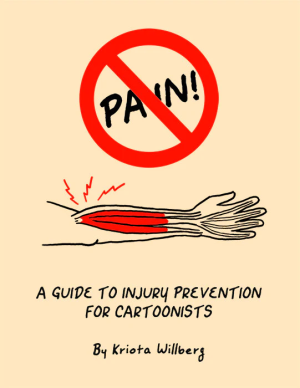
Ever wondered how to explain your research to your friends or family? Something that would be visually appealing, maybe incorporate some panels, maybe even involve collages? Then we have an event for you! Join us for a zine making workshop with Julie Fiveash, Librarian for American Indigenous Studies at Harvard's Tozzer Library, where attendees will learn how to turn their thesis, dissertation, or essay into a zine. No prior zine making experience required - just come with some writing or research you'd like to turn into a zine! Examples and art supplies will be provided. No registration required; drop-ins welcome!
Learn more at Zine Your Thesis!
 Countway Reads: Ripple Effects
Countway Reads: Ripple Effects
Wednesday, February 7 | 12:30-1:45pm | Countway Room 103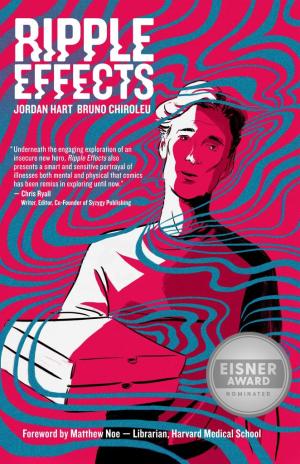
Storytelling is at the heart of medical and public health practice and Countway Library is here to help foster this tradition. Our Countway Reads initiative invites the community to read and learn together by engaging with creative works by people from all walks of life.
Join us to discuss the award-winning graphic novel Ripple Effects by Jordan Hart and Bruno Chiroleu. Ripple Effects explores life as a superhero with an invisible and incurable disease. The discussion will be facilitated by a Countway Library librarian. Light refreshments will be provided, and registration may include a free copy of the book for advanced reading. Seats are limited, so register early if possible!
Learn more at Countway Reads: Ripple Effects.
 Cartooning and Graphic Medicine Workshop: For the Healer, For Our Health, For Our Learning and Laughter
Cartooning and Graphic Medicine Workshop: For the Healer, For Our Health, For Our Learning and Laughter
Tuesday, February 13 | 5-6:15pm | Countway Rooms 102 & 103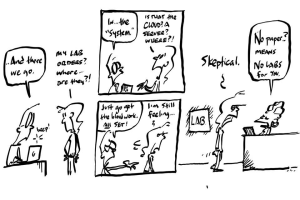
For the closing event of our Graphic Medicine exhibit series, we invite you to join us for a humor-filled cartooning workshop with Dr. Jack Maypole. Dr. Maypole is Clinical Professor of Pediatrics at Boston University Chobanian & Avedisian School of Medicine and an avid cartoonist, using pen and paper to capture the humor, absurdity, and joy of practicing pediatric medicine. His cartoons don't just amuse however; they also provide a pathway to discussing serious issues in medical practice today. From ethics to the electronic health record to inequality, comics can provide a window into the trials and tribulations of medicine. This workshop will provide some tips, tricks, and tools of the trade for beginning, or continuing, your own comics journey! Art supplies will be provided.
Learn more at Cartooning and Graphic Medicine Workshop!
Graphic Medicine Display
Curated by the Center for the History of Medicine
This display is located in the large glass case inside the Huntington Avenue entrance.
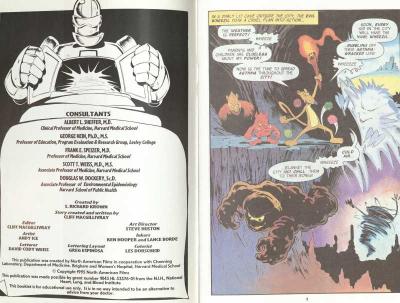
Engaging and educating medical students, patients, and the general public through illustration is as old as printing itself. Countway Library’s Center for the History of Medicine has an abundance of graphic materials dating from the sixteenth century to the present day in its rare book, archival, manuscript, and object collections that were created to convey medical and public health information to a variety of audiences (not to mention critique practice and sell products). The selections on display in the Countway Library complement the NLM’s exhibit and are a small sampling of Center-held works created to engage users in ways that print alone cannot. Whether it’s Jacob Frölich’s 1544 Anathomia oder abconterfettung eynes Mans leib, wie er inwendig gestaltet ist, which helped medical students understand what the inside of a human body looks like using lift-up flaps, an 1802 anti-vaccination satire depicting cows plaguing the bodies of patients opting to be vaccinated with cowpox matter, or a 1995 comic book designed to help children understand their asthma, the Center’s collections contain both well known and obscure examples of graphic medicine. Collections include the Harvard Medical Library Satiric Prints Collection, the Robert Norton Ganz Collection, circa 1790-1830 (H MS c60), the Manfred Kraemer Collection of Medical Prints and Satires, the Harvard Medical Library’s collection of medical illustrations, 1910-1950 (bulk) (about 10,000 illustrations), the Warren Anatomical Museum collection of medical illustrations (around 2,000 items), hundreds of anatomical atlases, medical and dental supply catalogs illustrating the latest equipment (and how to use it), public health posters, educational handouts and patient literature, and pharmaceutical and product advertisements found in trade and popular magazines (such as Robert Latou Dickinson’s illustrations for Tampax Incorporated). We welcome your inquiries.
Graphic Medicine Examples
Graphic Medicine seeks not only to inform, but to share stories and new perspectives that the reader may have never considered. The medium offers a unique chance to disrupt traditional medical norms through storytelling and visual metaphors that force a change in perspective. As you explore the NLM Traveling Exhibit banners, we encourage you to consider these additional examples of how comics can explore the complexities of medicine and public health.
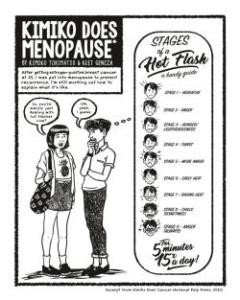
From the comics anthology Menopause: A Comic Treatment edited by MK Czerwiec
Created by Kimiko Tobimatsu & Keet Geniza
Kimiko Does Cancer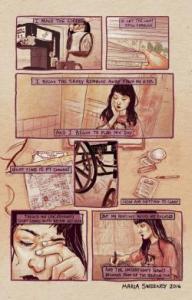
From the comic Brittle Joints by Maria Sweeney
Maria Sweeney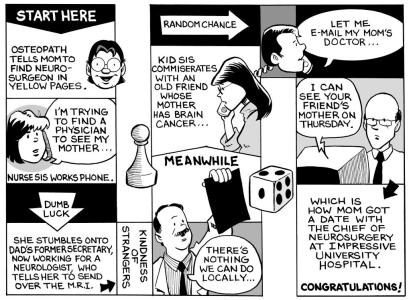
From the comic Mom's Cancer by Brian Fies
The Fies Files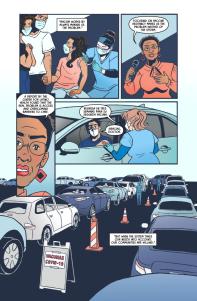
From the Frontline Comics Project
Artist: Amber Padilla
Storyteller: Luis Manriquez
Facilitator: Theresa Rojas
Adrift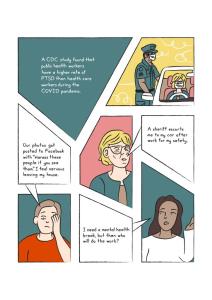
From the Frontline Comics Project
Artist: Hatiye Garip
Storyteller: Meredith Li-Vollmer
Facilitator: Ebru Ustundag
Toxic Excellence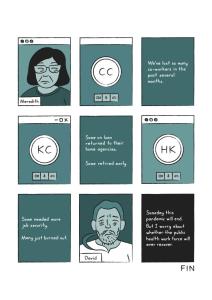
From the Frontline Comics Project
Artist: Hatiye Garip
Storyteller: Meredith Li-Vollmer
Facilitator: Ebru Ustundag
Toxic Excellence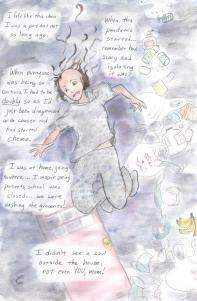
From the Frontline Comics Project
Artist: Maria Varmazis
Storyteller: Jessica Ericson
Facilitator: Michael Green
Negotiating the Family Gathering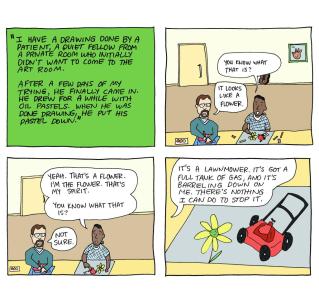
From the Comic Taking Turns: Stories from HIV/AIDS Care Unit 371 by MK Czerwiec
MK Czerwiec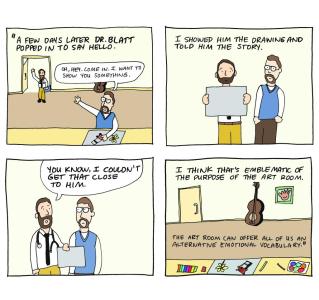
From the Comic Taking Turns: Stories from HIV/AIDS Care Unit 371 by MK Czerwiec
MK Czerwiec
_0.png)
_1.png)
_0.png)
_0.png)
_0.png)
_0.png)